 by our College Data Analytics Team
by our College Data Analytics TeamSalisbury total enrollment is approximately 8,124 students. 6,621 are undergraduates and 533 are graduate students.
Male/Female Breakdown of Undergraduates
The full-time Salisbury undergraduate population is made up of 55% women, and 45% men.
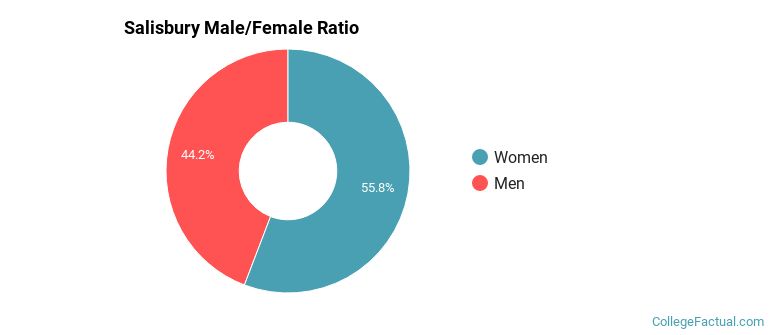
For the gender breakdown for all students, go here.
Salisbury Racial/Ethnic Breakdown of Undergraduates

| Race/Ethnicity | Number |
|---|---|
| White | 4,685 |
| Black or African American | 898 |
| Hispanic | 349 |
| Asian | 266 |
| Unknown | 185 |
| Multi-Ethnic | 124 |
| International | 57 |
| Native Hawaiian or Pacific Islander | 9 |
See racial/ethnic breakdown for all students.
Male/Female Breakdown of Graduate Students
About 82% of full-time grad students are women, and 18% men.
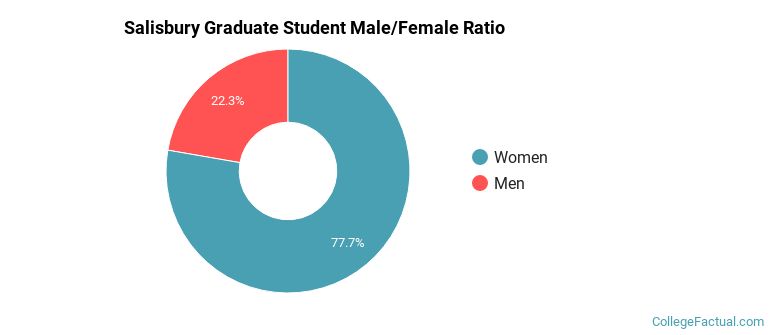
For the gender breakdown for all students, go here.
Salisbury Racial-Ethnic Breakdown of Graduate Students
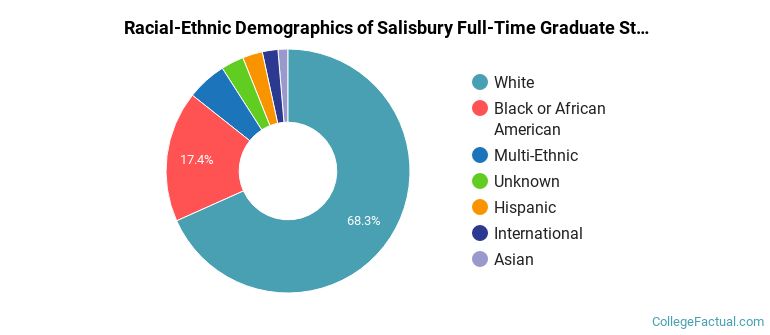
| Race/Ethnicity | Number |
|---|---|
| White | 371 |
| Black or African American | 95 |
| Multi-Ethnic | 19 |
| Unknown | 17 |
| Hispanic | 13 |
| International | 9 |
| Asian | 7 |
| Native Hawaiian or Pacific Islander | 1 |
See racial/ethnic breakdown for all students.

| Race/Ethnicity | Number |
|---|---|
| White | 5,756 |
| Black or African American | 1,116 |
| Hispanic | 388 |
| Asian | 302 |
| Unknown | 253 |
| Multi-Ethnic | 173 |
| International | 73 |
| Native Hawaiian or Pacific Islander | 10 |

There are approximately 4,710 female students and 3,414 male students at Salisbury.
Salisbury ranks 1,220 out of 2,183 when it comes to geographic diversity.
19.29% of Salisbury students come from out of state, and 0.53% come from out of the country.

The undergraduate student body is split among 21 states (may include Washington D.C.). Click on the map for more detail.
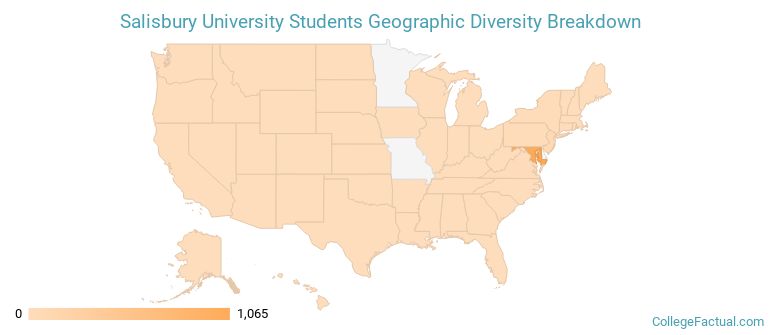
| State | Amount |
|---|---|
| Maryland | 1,065 |
| New Jersey | 78 |
| Pennsylvania | 37 |
| New York | 29 |
| Connecticut | 14 |
Students from 41 countries are represented at this school, with the majority of the international students coming from China, South Korea, and Nigeria.
Learn more about international students at Salisbury.
A traditional college student is defined as being between the ages of 18-21. At Salisbury, 66.13% of students fall into that category, compared to the national average of 60%.
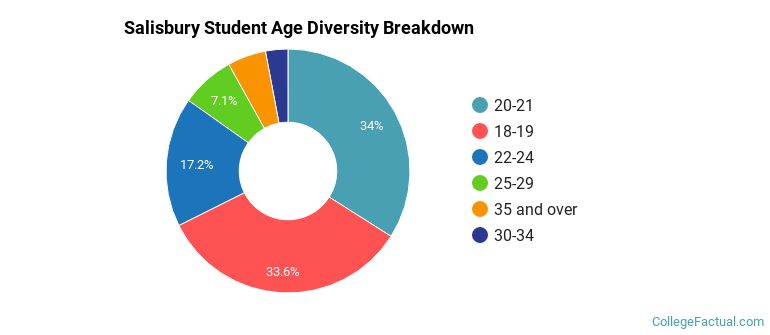
| Student Age Group | Amount |
|---|---|
| 20-21 | 2,897 |
| 18-19 | 2,866 |
| 22-24 | 1,466 |
| 25-29 | 606 |
| 35 and over | 435 |
| 30-34 | 253 |
| Under 18 | 0 |
Footnotes
*The racial-ethnic minorities count is calculated by taking the total number of students and subtracting white students, international students, and students whose race/ethnicity was unknown. This number is then divided by the total number of students at the school to obtain the racial-ethnic minorities percentage.
References
Department of Homeland Security Citizenship and Immigration Services
Read College Factual's Diversity Ranking Methodology.